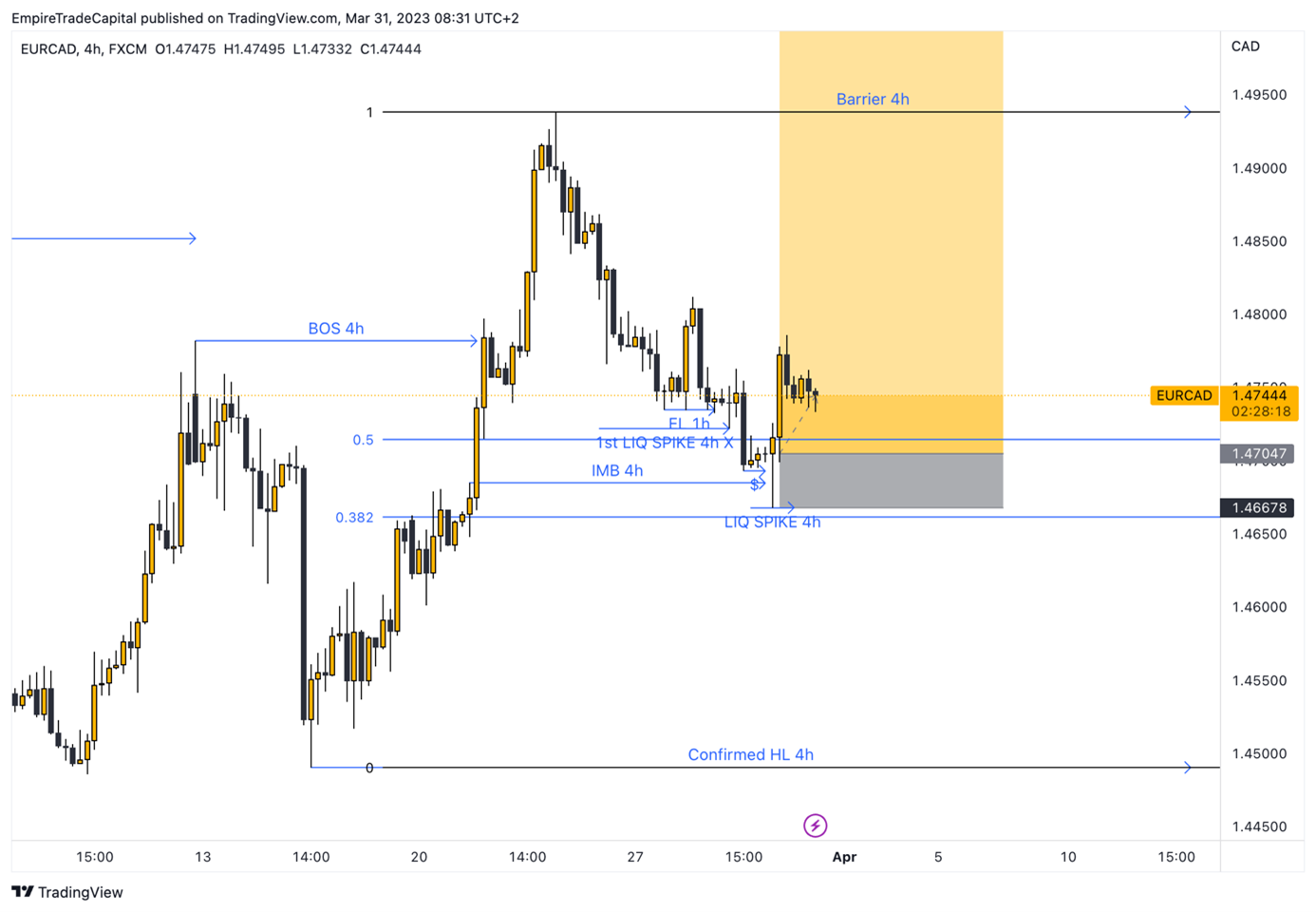One of the main aspects I analyse in the given markets is the market structures. They remained bullish even after I left the market at a loss. Based on this, I continued to monitor the market and wait for the next possible entry.
The Forex market is traded continuously throughout the working week, but some trading sessions are characterized by their low volume of transactions. I mean the Asian business session. During the night, from Wednesday to Thursday, the Asian session, the so-called range was formed on the EURCAD. As I was looking for another entry into this market, I was delighted to see this range this morning. Range has a high volume of liquidity on both sides, which is needed by the aforementioned financial institutions to fulfil their orders. The legality that applies and will apply in the market - the profit of one trader represents the loss of the trader on the other side. In my case, I was waiting for the price to fall below the range, and the retail traders, who were planning to buy would walk away with a loss. That's, exactly what happened at 9:00 AM. The last piece of the puzzle I was waiting for was the bullish momentum candlestick. At 10:00 AM I placed my buy order again with the stop-loss level below the liquidity spike.
From a technical point of view, I expect a take-profit around equal highs at the price of 1.50982. as a result, the structures from the weekly time frame were transformed into bullish ones when the price was at 10.3. 2023 closed above the previous lower high. The daily time frame is also bullish. After filling the weekly imbalance, the price on the four-hour time frame started to fall correctively, which represents another positive signal to buy. This decline stopped at the 0.5-0.382 Fibonacci retracement zone, also known as the Golden zone, and the last Daily Imbalance zone.
The price now continues to rise after the structures on the one-hour time frame also switch into bullish ones. Currently, my trade is at +1.75%.* Today at 11:00 AM, there will be a macroeconomic announcement of the CPI for the Eurozone, which will certainly have an impact on the EUR/CAD market as well. [1]

Chart 1 EURCAD four-hour time frame
* Time zone for the time data used in the text is UTC 2.
* Past performance is no guarantee of future results.
[1] Forward-looking statements are based on assumptions and current expectations, which may be inaccurate, or based on the current economic environment which is subject to change. Such statements are not guaranteeing of future performance. They involve risks and other uncertainties which are difficult to predict. Results could differ materially from those expressed or implied in any forward-looking statements.








